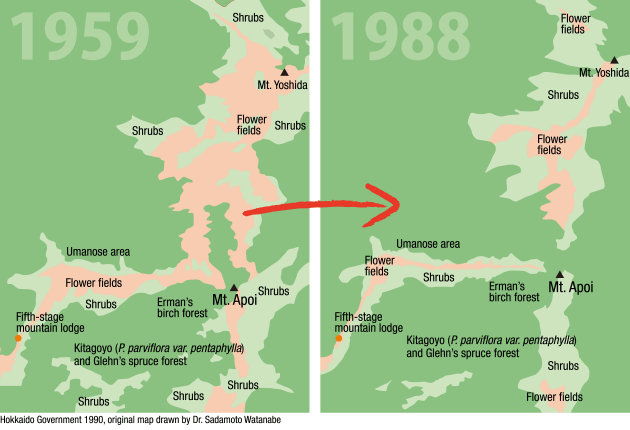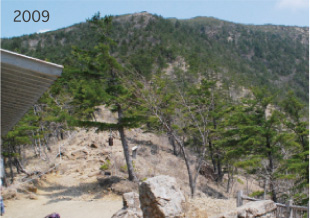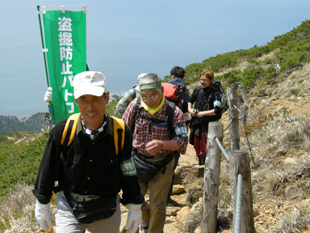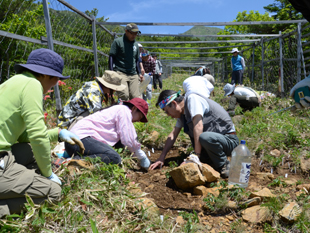3. A Crisis facing the flowers of Mt. Apoi
- Theme B:
Learning about and enjoying the natural environment from Mt. Apoi's alpine plants
The Hidakaso (Callianthemum miyabeanum) species symbolizing Mt Apoi's alpine plants faces the risk of extinction, and the area's plant communities are rapidly declining. This is the stark reality of Mt. Apoi's vegetation. Due to illegal digging for personal gardens and flower shops that peaked in the 1990s, fewer and fewer Hidakaso flowers have been seen. They were even at risk of total disappearance from the Horoman flower fields , which were damaged by digging on a devastating scale. Although illegal digging has now been almost entirely stopped, the decline of alpine plant communities continues because, in addition to a reduced number of individual plants, dwarf stone pines and Kitagoyo (P. parviflora var. pentaphylla) have encroached on flower fields, depriving other species of their habitats. This situation may be attributable to factors including global warming, acid rain, and Hokkaido sika deer feeding on plants, but the actual causes have not yet been confirmed.
Changes in vegetation



The Mt. Apoi Supporters' Club - an organization established by locals in 1997 following massive illegal digging of Hidakaso - actively engages in a range of regional initiatives. These include monitoring to protect rare plant species, awareness enhancement activities for children, and mountain trail development to prevent trampling of plants. In 2005, club members and researchers established the Come Back 1952 Mt. Apoi Restoration Committee to conduct alpine plant restoration initiatives.

Patrol to prevent illegal digging

Alpine plant restoration initiative



